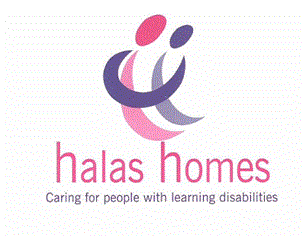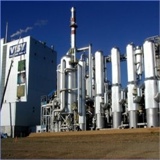Information
-
Document No.
-
Audit Title
-
Client / Site
-
Conducted on
-
Prepared by
-
Location
-
Personnel
What is the task and who will be undertaking the assessment. Remember to involve employees and Health and Safety Representative(s) (HSR).
-
Task description:
-
Location of task
-
Persons undertaking the risk assessment and determining the controls, e.g Manager, employees, HSR
Reason:
-
Existing task requiring review
-
New task
-
Change in task, object or tool
-
New information
-
Report of a musculoskeletal disorder (MSD)
Step 1a - Does the task involve repetitive or sustained postures, movements or forces? Tick if the task requires any of the following actions to be done: *** Repetitive - Means done twice in a minute Sustained - Means done for more than 30 seconds at a time
Postures and movements
-
Bending the back forwards or sideways more than 20 degrees
-
Twisting the back more than 20 degrees
-
Backward bending of the back more than 5 degrees
-
Bending the head forwards or sideways more than 20 degrees
-
Twisting the neck more than 20 degrees
-
Bending the head backward more than 5 degrees
-
Working with both hands above shoulder height
-
Reaching forwards and sideways more than 30cm from the body
-
Reaching behind the body
-
Squatting, kneeling, crawling, lying, semi-lying or jumping
-
Standing with most of the body's weight on one leg
-
Twisting, turning, grabbing, picking or wringing actions with the fingers, hands or arms
-
Working with the fingers close together or wide apart
-
Very fast movements
-
Excessive bending of the wrist
Forces
-
Lifting or lowering
-
Carrying with one hand or one side of the body
-
Exerting force with one hand or one side of the body
-
Pushing, pulling or dragging
-
Gripping with fingers pinched together or held wide apart
-
Exerting force in an awkward posture e.g. * supporting items while arms or shoulders are in an awkward posture * moving items while legs are in an awkward posture
-
Holding, supporting or restraining any object, person, animal or tool
Comments:
-
It may be helpful to include pictures to help describe the task and actions more clearly
Step 1b - Does the task involve long duration
-
Is the task done for more than 2 hours over a whole shift, OR
-
Continually for more 30 minutes at a time
Step 2 - Does the task involve high force? Tick if the task involves any of the following high force actions, even if force is applied only once:
-
Lifting, lowering or carrying heavy loads
-
Applying uneven, fast or jerky forces during lifting, carrying, pushing or pulling
-
Applying sudden or unexpected forces (e.g. When handling a person of animal)
-
Pushing or pulling objects that are hard of move of stop (e.g a trolley)
-
Using a finger-tip grip, a pinch grip or an open-handed grip to handle a heavy or large load
-
Exerting high forces at the limit if the grip span
-
Needing to use two hands to operate a tool designed for one hand
-
Throwing or catching
-
Hitting or kicking
-
Holding, supporting or restraining person, animal or heavy object
-
Jumping while holding a load
-
Exerting force with the non preferred hand
-
Two or more people need to be assigned to handle a heavy or bulky load
-
Exerting high force while in an awkward posture * refer to step 1a for guidance on awkward postures
Comments
-
It may be helpful to include any pictures to help describe the forces.
Tick if employees report any of the following about the task
-
Pain or significant discomfort during the task
-
The task can only be done for short periods
-
Stronger employees are assigned to do the task
-
Employees think the task should be done by more than one person, or seek help to do the task
-
Employees say the task is physically very strenuous or difficult to do
Step 3 - Is there a risk
Does the task involve repetitive or sustained postures, movements or forces, AND long duration ?
-
Tick if you ticked any boxes in Step 1a AND 1b
If ticked the task is a risk. Risk control is required. See Risk Control section.
Does the task involve high force?
-
Tick if you ticked any boxes in Step 2
If ticked the task is a risk. Risk control is required. See Risk Control section.
Step 4 - Are environmental factors increasing the risk? Tick if any of the following environmental factors are present in the task
-
Vibration (hand, arm or whole body)
-
High temperature
-
Radiant heat
-
High humidity
-
Low temperatures
-
Wearing protective clothing while working in hot conditions
-
Wearing thick clothing while working in cold conditions (e.g. Wearing gloves)
-
Handling very cold or frozen objects
-
Employees are working in hot conditions and are not used to it
Has there been a report of an MSD associated with the task? The report of an MSD associated with the task usually means increased risk so implementing risk controls should be a high priority.
-
Tick if a report of a MSD has been made
Risk Control
What are the sources of risk? Why is it a risk?
-
What needs to be controlled, what did you tick in Step 1, 2, and 4. Why is it a risk?
How to fix the problem.
-
When considering control measures in consultation with employees, HSRs you should consider:
Can you stop doing the task or part of the task to eliminate the risk? If no...
Can you eliminate or reduce the risk by doing one or more of these things?
* altering the workplace
* altering the environmental conditions
* altering the systems of work
* changing the objects used in the task or
* using mechanical aids
If all this can not occur ...
Can you reduce the risk with information , instruction, training and supervision?
Risk Control Action Plan Item - 1
-
Action item to be completed by.. date
-
Person / team responsible for ensuring the action item is completed.
-
Control measure .. Remember to consult the advice above to ensure the safest practicable control measure is implemented.
-
When it was actually completed.
-
Pictures or media of the control implemented:
Risk Control Action Plan Item - 2
-
Action item to be completed by.. date
-
Person / team responsible for ensuring the action item is completed.
-
Control measure .. Remember to consult the advice above to ensure the safest practicable control measure is implemented.
-
When it was actually completed.
-
Pictures or media of the control implemented:
Risk Control Action Plan Item - 3
-
Action item to be completed by.. date
-
Person / team responsible for ensuring the action item is completed.
-
Control measure .. Remember to consult the advice above to ensure the safest practicable control measure is implemented.
-
When it was actually completed.
-
Pictures or media of the control implemented:
Risk Control Action Plan Item - 4
-
Action item to be completed by.. date
-
Person / team responsible for ensuring the action item is completed.
-
Control measure .. Remember to consult the advice above to ensure the safest practicable control measure is implemented.
-
When it was actually completed.
-
Pictures or media of the control implemented:
Risk Control Action Plan Item - 5
-
Action item to be completed by.. date
-
Person / team responsible for ensuring the action item is completed.
-
Control measure .. Remember to consult the advice above to ensure the safest practicable control measure is implemented.
-
When it was actually completed.
-
Pictures or media of the control implemented:
-
Date assessment controls agreed to
-
When it was actually completed.
-
Management / Work area management representative to sign here:
-
Work area Health and Safety Representative (and or deputy) to sign here:
-
Others (employees, consultant):













